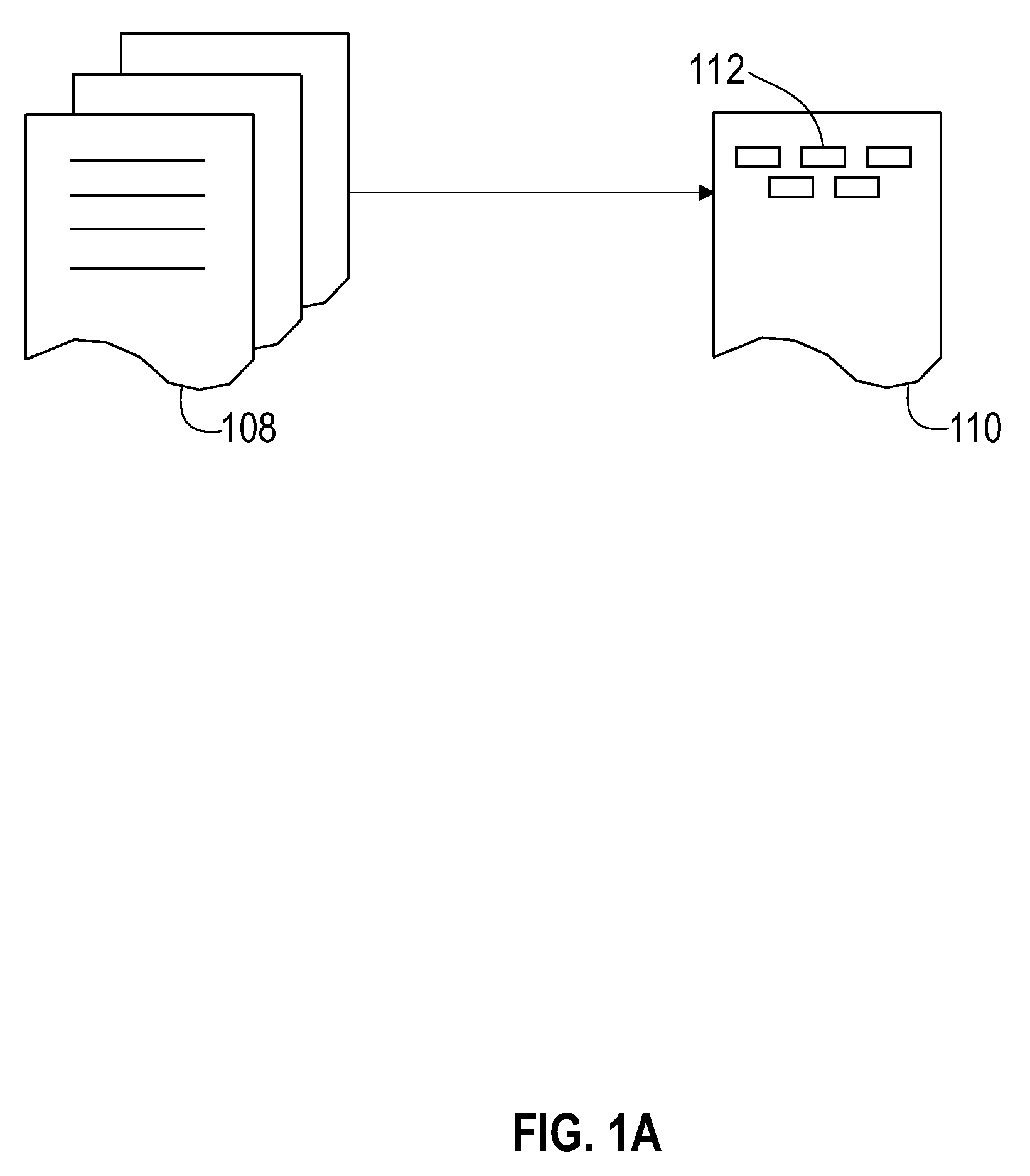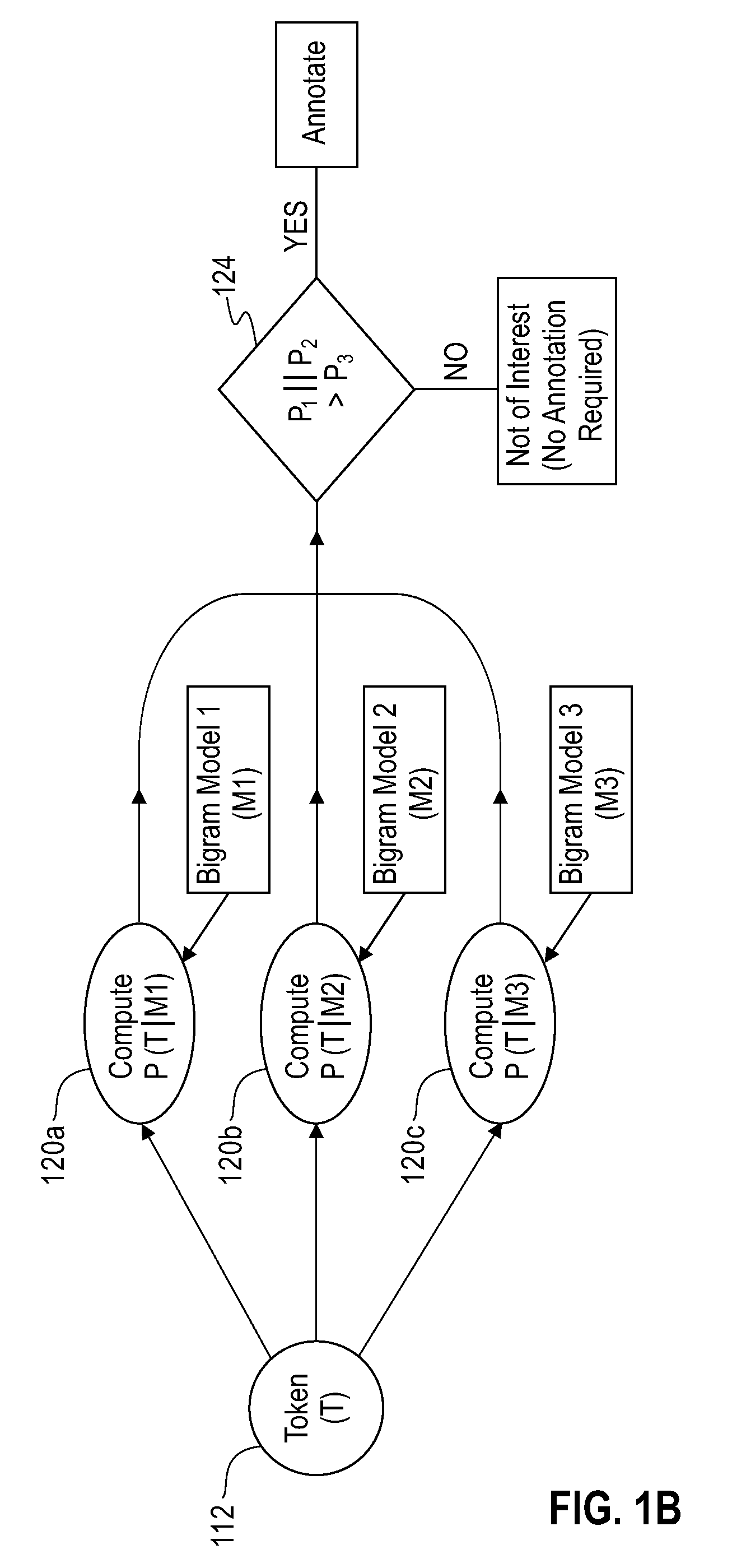System and method for extracting entities of interest from text using n-gram models
a text and entity extraction technology, applied in the field of text analysis, can solve the problems of inability to scale up the automated process, not necessarily more accurate, and less tim
- Summary
- Abstract
- Description
- Claims
- Application Information
AI Technical Summary
Benefits of technology
Problems solved by technology
Method used
Image
Examples
Embodiment Construction
[0021]Methods are disclosed herein for analyzing text to identify entities of interest within that text. FIGS. 1A and 1B show one preferred annotation technique used in implementing the invention. As shown in FIG. 1A, text, which may be in the form of one or more documents 108 (e.g., documents that are retrievable and / or storable in electronic format), is passed through a tokenizing routine to form tokenized documents 110 that include space-delimited stings or tokens 112.
[0022]As shown in FIG. 1B, these tokens 112 are then analyzed by two (or more) models M1, M2, M3, each of which has been previously trained to recognize a different type of entity, such as a chemical name (e.g., M1), a chemical formula (e.g., M2) or a plain text English language word of no particular chemistry-related interest (e.g., M3); thus, these models are used to classify the tokens. The models M1, M2, M3 of FIG. 1B are different annotation bi-gram models, which are described in greater detail below. For each ...
PUM
 Login to View More
Login to View More Abstract
Description
Claims
Application Information
 Login to View More
Login to View More - R&D
- Intellectual Property
- Life Sciences
- Materials
- Tech Scout
- Unparalleled Data Quality
- Higher Quality Content
- 60% Fewer Hallucinations
Browse by: Latest US Patents, China's latest patents, Technical Efficacy Thesaurus, Application Domain, Technology Topic, Popular Technical Reports.
© 2025 PatSnap. All rights reserved.Legal|Privacy policy|Modern Slavery Act Transparency Statement|Sitemap|About US| Contact US: help@patsnap.com



